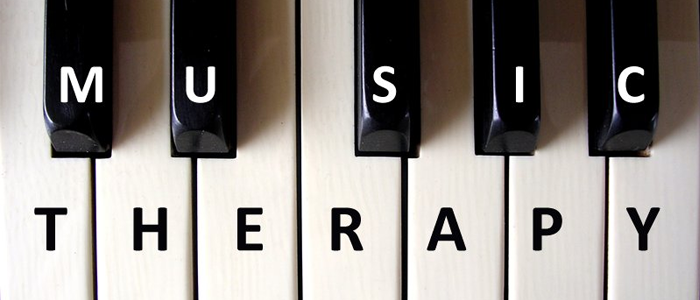
Picture it. You’re driving in your car down a long stretch of open highway with the windows down on a warm, pleasant day. The sun is out, the wind is in your hair, and you’re playing your favorite song on the car stereo. You sing along at the top of your lungs as if no one is listening. Sit with that feeling for just a moment. Imagine that feeling and how it might impact your mood, emotional state, and physical state.
I like to use this example when people ask me about how music can be used as treatment or as a part of treatment when I work with clients. We all have the ability to be affected by music in some way. Although listening to a song in the car isn’t the “official” definition of music therapy, the experience itself can certainly be cathartic for some. Music can be used in an intentional way with a person to work towards shared goals. Music can be used as a form of therapy.
You might be wondering, “So, what exactly is music therapy?” According to the American Music Therapy Association (AMTA), “Music Therapy is the clinical and evidence-based use of music interventions to accomplish individualized goals within a therapeutic relationship by a credentialed professional who has completed an approved music therapy program.” Music therapy is the clinical use of music to address musical and non-musical goals. Goals may be categorized under domains such as social, emotional, cognitive, motor/physical, or academic. Treatment is tailored to the individual based on their needs and can be used with just about anyone. Music therapists work in a variety of settings, which may include schools, medical and psychiatric hospitals, clinics, nursing homes, correctional facilities, and hospice settings. An individual does not need to have any musical talent or background to participate in music therapy, but board certified music therapists must be proficient in at least 1-2 instruments. Music therapists may work with people in groups or individually, and are trained and board certified to practice using this modality.
Music therapy can look quite different depending on whom one is working with and what they are working towards. Typically, music therapy involves actual music making and musical interactions between the therapist and client. This may involve both client and therapist playing instruments together, singing together, writing a song together, or engaging in some kind of musical experience together. Sometimes, verbal conversations occur between client and therapist. However, most of the time communication occurs within the music without verbalization. It is during these musical conversations that a music therapist will make certain choices to support the client’s goals. This might look like mirroring a client’s rhythm on an instrument to support and acknowledge their self expression, promoting communication with a client with dementia by reminiscing in singing a familiar song, using a musical motif created by a client and turning that into a song, or engaging in a musical activity that provides a concrete and organized multi-sensory experience for a child on the autism spectrum. These can be effective ways to utilize music as a coping skill, validate a client’s feelings, and encourage mood regulation and self-reflection.

Music therapists use music in a variety of ways, however, and sometimes this is not based in improvisation. With Alzheimer’s patients, for instance, familiar and positive music is employed to create a safe environment for a person who might feel confused and threatened due to the deterioration of their executive functions. Music therapy is used to build communication and social skills in children who have special needs, and is used to rebuild neuropathways in stroke patients and people with Parkinson’s disease to help them walk and/or talk again. The use of music therapy with individuals coping with psychiatric symptoms may include interventions such as songwriting, drumming, lyric analysis, practicing mindfulness with music, or combining the use of music along with other creative modalities such as movement or art making.
In my role as an expressive arts therapist at Prakash Ellenhorn, music is not the only modality I use with clients. This is my area of expertise, however the use of visual art, creative writing, drama, and movement are forms of art that a client may also have interest in. At times, music can be incorporated within the use of other modalities, or sometimes it is not used at all depending on what the client is open to. I am also a mental health counselor and typically blend my counseling and creative arts background together when working with individuals. One of the most important things I have found in my clinical experience is that not everyone wants to talk about what is going on with them internally. Sometimes people need other outlets to communicate and express what might be happening for them, or they need alternative methods of exploring their experience or their perception of what the problem may be. Sometimes non-verbal interventions are the way to reach a person. It is through these non-verbal interventions that insight and exploration are encouraged.
So, next time you hear your favorite tune come on the radio, think about how music has the ability to shift your mood or feelings to another place. Then imagine how that might feel for someone who is struggling today. There is a reason why music historically has brought people together and is deeply rooted in most cultures around the world. As we move towards a more holistic approach to healing and treatment in the United States, it only makes sense that music, art, and other creative modalities would be included in this movement.

